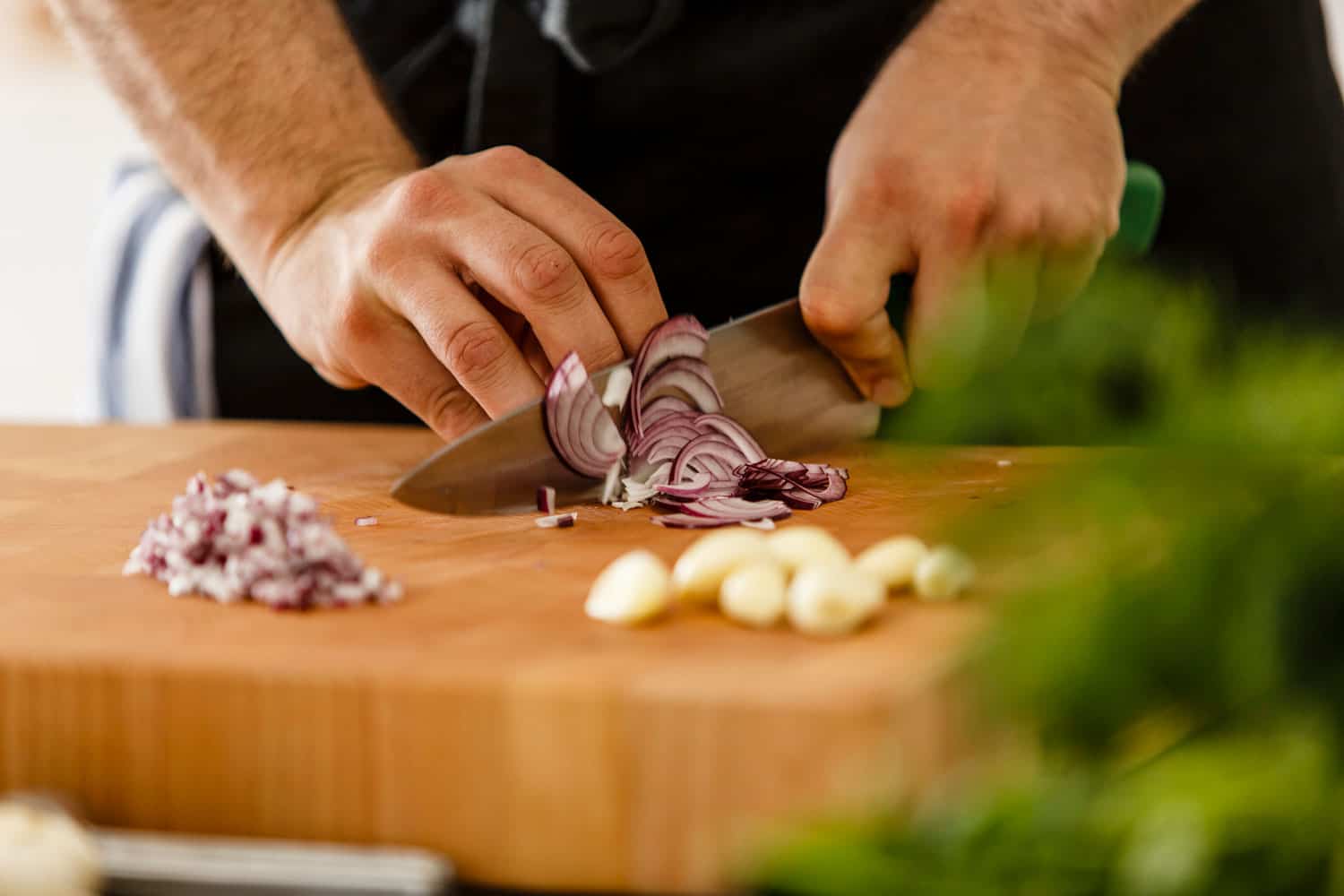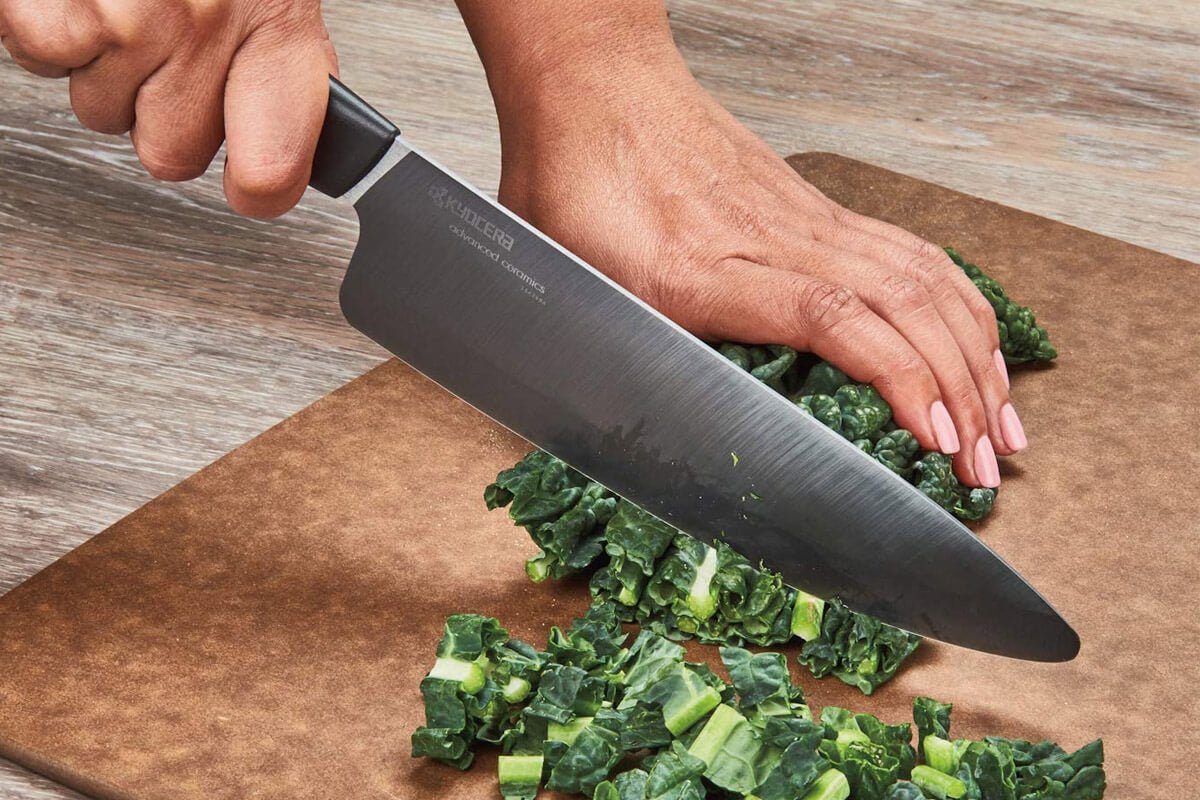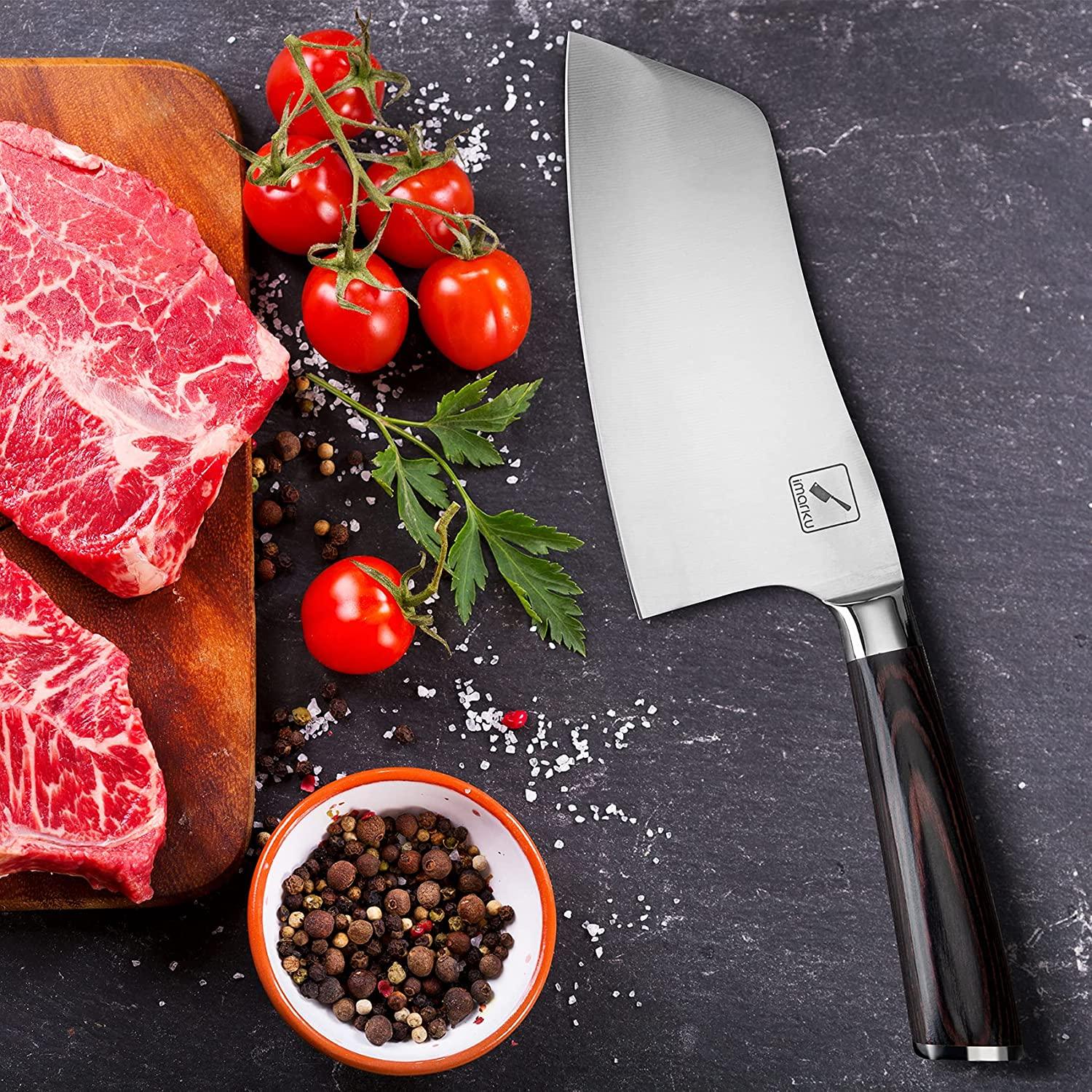TABLE OF CONTENTS
Apart from the kitchen blades, perhaps the following important tool in your culinary arsenal is the board you use for chopping and cutting various ingredients.
When it comes to choosing the best cutting board for dicing, mincing, chopping, and smashing, you will see that the task is overwhelming. The shapes, sizes, and material vary significantly, and when you rummage through all sorts of kitchen boards walking down the aisle, you will ask yourself how to choose a cutting board.

Cutting Board Types
Most of us have at least one cutting or chopping board in our kitchen, and generally, we use it for everything from slicing loaves of bread to dicing vegetables and everything in between. Typically, these boards are about half to one and a half-inch thick so that they can come with enough weight for chopping. But it shouldn’t be too heavy to be challenging to move around the kitchen. Let’s take a look at the different types of cutting boards.
Carving board
Sometimes, cutting boards come with a juice tray placed at the board's exterior for holding the juice from the veggies or fruits or meat you are cutting. This tray makes sure that you won't have to deal with the mess all over the kitchen tops. While it was originally designed for cutting meat safely, these trays are also helpful in chopping juicy fruits.
Bread board
Having slices of tea cakes or freshly baked loaves of bread is a beautiful delicacy that we all want to enjoy at our dinner table. Unlike the regular cutting board used for frequent chopping and cutting, breadboards are much longer in size and can easily accommodate the length of all kinds of loaves.
Butcher block
A butcher block is much heavier compared to regular cutting boards. They have adequate thickness and weight so that you can effortlessly chop all kinds of meat without having to worry about any damage. When going for butcher block, it’s imperative to have a larger block not to spread germs.
Flexible mat
It is a great option when looking for an opportunity that can be used as a surface for acting as a chopping board. As these mats can be twisted and bent into any shape, you will not have to think of scraping any food into the pot without spillage.

Things To Consider When Choosing A Cutting Board
Before you start to chop, you must ensure that you move your knife to a suitable surface. Well, that’s the right chopping board that offers the proper longevity and versatility. You will want to invest in a cutting board that you will use regularly and use for a long.
Besides the materials and size of your cutting board, you must also consider whether you want it for any alternate usage and what it takes to maintain it. After all, cutting boards are way more than their functional usage. You may choose to use larger boards for serving loaves of bread, while smaller boards can be a base for your charcuterie. More giant cutting boards can also be used as a decorative tray on the coffee tables.
If you are going for a wooden cutting board, it will need more care and maintenance than the plastic counterparts. You can use cutting board oil or food-safe beeswax for moisturizing the board. The more regular you are in applying these oils or wax, the better will be the appearance of your cutting board.

Cutting Board Materials To Avoid
According to experts, when you are thinking about choosing a cutting board, there are some materials you should always steer clear of. If your cutting board is made of marble, granite, or glass, the hard surface of the board will destroy the sharpness of the kitchen blade way faster. The same goes for Corian cutting boards also.

Other Tips To Help You Choose The Right Cutting Board For You
Keep separate boards for specific foods
If you are concerned about cross-contamination, keep cutting boards separate from different items. You may opt for colour-coded plastic boards so that you can easily set them apart for typical usage.
Non-skid feet
When your cutting board has a non-skid bottom, it will ensure that your board doesn’t slide while cutting. You may also keep a wet towel underneath to prevent the board from skidding.
Different sizes
If you are passionate about cooking and spend a considerable amount of time cutting various types of ingredients, from baking stuff to fresh herbs to meat and vegetables, you can consider keeping multiple cutting boards handy. For instance, having a small board for slicing fruit or a block of cheese smoothly can make the job a whole lot easier. Similarly, having a large cutting board for cutting steaks or winter squash would be great.
Mind your height
If you are taller than ordinary people, you should go for a thick cutting board. This will raise your working surface and prevent you from uncomfortable bending. This little point in ergonomics can do a lot in improving your experience at the chore. On the flip side, if you are a short person, go for a cutting board that’s not thick.

What Are The Best Cutting Boards To Buy?
When you have to choose the perfect cutting board for your kitchen, there are three things you should be considering. First of all, think of the material that the board is constructed of. Next comes the amount of surface area and, finally, the thickness of the board. These three considerations will mainly impact the board's productivity along with the ageing specifications of the board. It will also help you determine the board's aesthetics while also deciding whether it will develop stains or odours and how sharp the knives will remain.
With that being said, the most commonly available material used for cutting boards is rubber, wood, or wood fiber composite. Besides glass and marble, you should also avoid cutting boards made of exotic wood like teak and bamboo as they share similar knife-damaging abilities. But when it comes to rubber and wood, each of these materials come with their own set of pros and cons.
Rubber boards are primarily used in professional cooking sectors as they are inexpensive, easy to clean, and highly durable. Moreover, they can be easily refined with the help of sandpaper. And in case the aesthetics don't matter much to you, rubber boards are the best choice.
Choosing cutting boards made of wood will add to the aesthetic appeal of the element, particularly the top-level end grain boards. In these cutting boards, the wood grain is perfectly aligned so that it runs from the top to down vertically and extends even underside. It not only looks stunning but gives a softer surface that keeps up the sharpness of the knives also.
The other variant is long grain wood for a board where the grains run in horizontal order. The surface is comparatively more complex and lesser luxurious but is still a good choice for cutting boards. When you care and maintain these cutting boards properly, they will last for years together.
2 Sided Wooden Cutting Boards
These cutting boards are standing variants, and they are effortless to pick up. If you go for a premium class 2 sided wooden cutting board, you will see that the two sides are meant for two different purposes. These boards mostly come with a dark wood finish that also adds to the elegance of the product.
Some of the major features of these cutting boards include knife-friendliness that ensures your cutting board can easily endure heavy blows with ease. Moreover, they are multifunctional, meaning you can use them as a heavy-duty butcher block, cheese board, and also for regular chopping and cutting.

2 Sided Cutting Board With Large Juice Groove
You may also consider another kind of cutting board that comes with a large juice groove. These boards are also suitable for daily use since they are made of high-quality wood or bamboo, has a sturdy built that's resistant to shedding or cutting.
These boards are also equipped with a sizeable bevelled juice groove on either side, which can collect the juice of the fruits and vegetables you cut to keep up your kitchen's tidiness. You can also utilize the cutting board as a vegetable tray for introducing the fresh ingredients directly into the pot.
The Bottom Line
When selecting the perfect cutting board for your kitchen, you may be tempted to go for the ones with added features. But you should see how much you require and whether the add-ons help keep up the product's stability. After all, kitchen cutting boards are highly functional objects that require your careful consideration when buying and some maintenance to ensure it continues to serve you for years together.






















Leave a comment
All comments are moderated before being published.
This site is protected by hCaptcha and the hCaptcha Privacy Policy and Terms of Service apply.